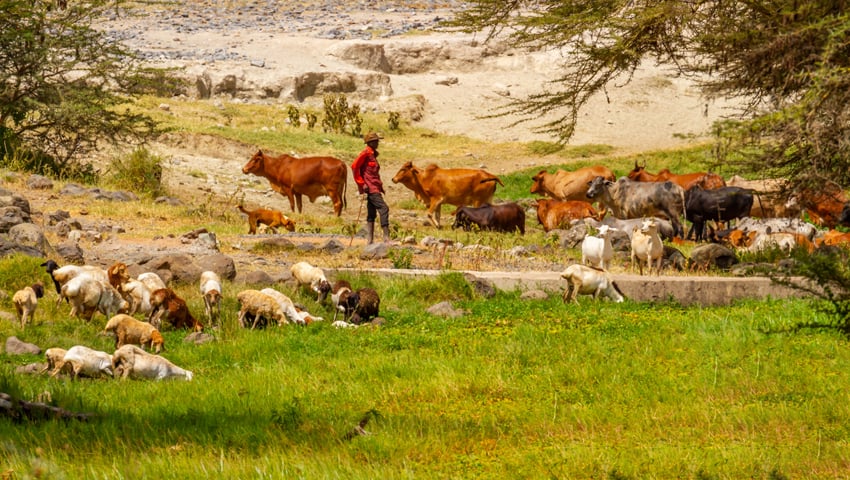A NEW FAO study, How much do large-scale and small-scale farming contribute to global deforestation?, shows that between 2000 and 2018 agricultural expansion has driven almost 90% of deforestation globally.
Perhaps unexpectedly, it shows that most of the forest conversion to cropland and grassland occurred as small-scale farming expanded, accounting for 68% of agriculture-driven deforestation (with 40% for cropland and 28% for livestock grazing). Small-scale farming represents a share of 97% of agriculture-driven deforestation in Africa, 65% in North and Central America, 59% percent in Asia and 52% in South America.
The highest shares of forest losses due to large-scale farming were found in South America where 30% of agriculture-driven deforestation was associated to large-scale livestock production, as well as in Asia, with 38% linked to large-scale crop production, mainly for oil palm plantations.
The study authors say that “Despite some progress in curbing deforestation, conversion of forests to other land use remains a major threat to these critical resources and a serious shortcoming in achieving climate and biodiversity global goals.
“Various analyses on forest cover and land use change show that expansion of agricultural land and deforestation are closely linked and therefore solutions for sustainable agriculture and forestry need to be coupled.”
The Global Forest Resources Assessment (FRA) 2020 Remote Sensing Survey (FRA 2020 RSS) of the Food and Agriculture Organization of the United Nations (FAO), was carried out using a remote sensing and sampling-based approach.
The study observed changes to landscape context and fragmentation, speed of clearing, field size, field boundaries, field shape, field patterns and the presence of infrastructure.
The authors say “A combination of diverse characteristics is necessary for robust differentiation between deforestation linked to large-scale and small-scale farming using Earth Observation imagery.
“The distinction between large-scale and small-scale farming provides important information for policymaking and design of practical interventions. Policy tools may differ significantly according to the level of private investment and production systems associated with deforestation.
“International discourse has tended to focus mainly on “commercial” or “industrial” agriculture (or “agribusiness”) as the main cause of deforestation. In contrast, this study shows that small-scale farmers also play a significant role in the conversion of forests to agricultural land.”
However, this study also illustrates how deforestation driven by large-scale interventions is still ongoing and has significant impacts in some regions and sub-regions.
